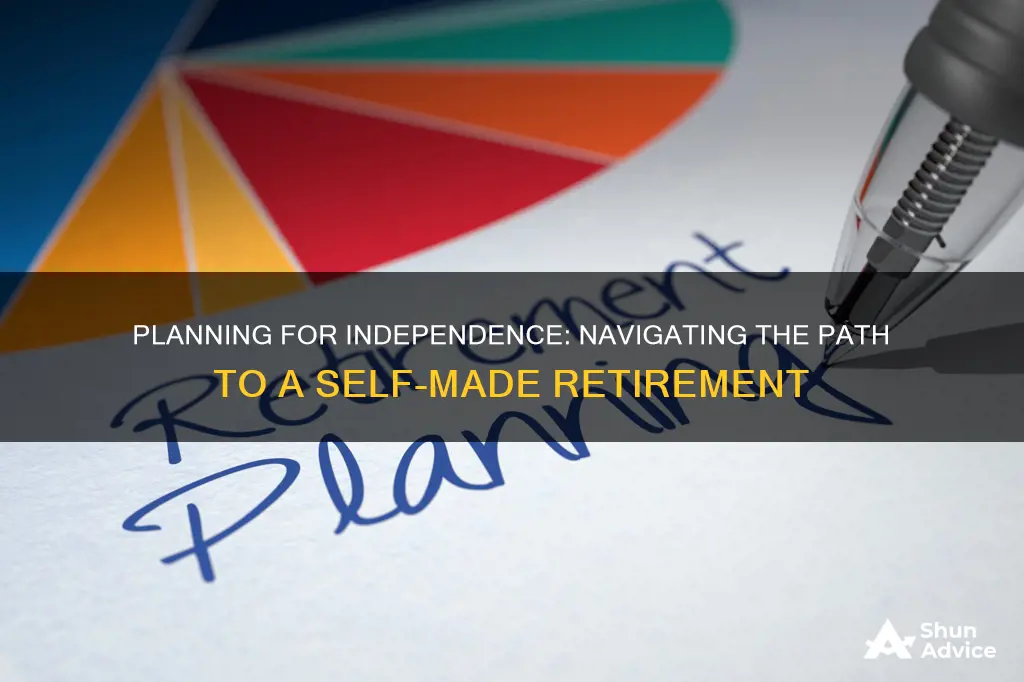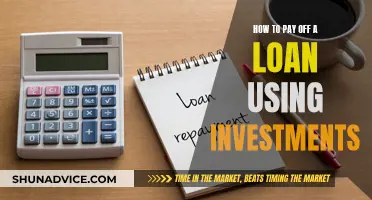
Investing for an independent retirement is a long-term process that requires discipline and planning. Here are some strategies to help you get started on your journey towards a comfortable retirement:
- Start saving early and often: The power of compounding means the earlier you begin saving, the more your money will grow over time. Aim to save at least 10% to 15% of your income, and consider increasing your contributions whenever possible.
- Take advantage of tax-advantaged accounts: Utilise retirement accounts such as 401(k)s, IRAs (Individual Retirement Accounts), and their Roth versions, which offer tax-free growth or tax deductions.
- Understand asset allocation: Diversify your investments across stocks, bonds, and cash. As a rule of thumb, the younger you are, the more aggressive your allocation can be, with a higher percentage in stocks. As you approach retirement, shift towards more conservative investments to preserve your capital.
- Consider various investment options: Besides the traditional stocks, bonds, and mutual funds, explore alternatives such as dividend-paying stocks, rental properties, annuities, and even business ventures. Each option has its own risks and rewards, so conduct thorough research or consult a financial advisor before committing your funds.
- Automate your investments: Robo-advisors and target-date funds can help maintain your desired asset allocation with minimal upkeep. While they charge additional fees, they provide a hands-off approach to investing for retirement.
- Maximise employer contributions: If your employer offers matching contributions to your 401(k) or similar plans, try to maximise this benefit. It's essentially free money that boosts your retirement savings.
- Consult a financial professional: Retirement planning can be complex, and a qualified financial advisor can provide personalised guidance based on your circumstances and goals.
| Characteristics | Values |
|---|---|
| Investment type | Tax-advantaged accounts, asset allocation, dividend-paying stocks, rental property, annuities, QLACs, mutual funds, index funds, ETFs, individual stocks and bonds, robo-advisors, target date funds, IRAs, 401(k)s, HSAs, SEP IRAs, SIMPLE IRAs, Keogh plans, health savings accounts, traditional and Roth IRAs |
| How it works | Contribute pre-tax wages, gain tax benefits, receive matching contributions from employers, receive tax-free withdrawals, receive steady income, reduce volatility, generate competitive income, receive guaranteed income stream |
| Advantages | Tax advantages, higher returns, flexibility, diversification, steady income, long-term growth, income guarantees, higher contribution limits, profit-sharing, less regulation, invest in higher-return assets, access to a wide range of fixed-income instruments, potential for capital appreciation, built-in return, diversified source of income, protection against inflation |
| Disadvantages | Early withdrawal penalties, limited investment options, additional taxes, higher fees, complicated, lack of inflation protection, principal loss, difficult to understand, high-risk, costly, income may not be sufficient |
What You'll Learn

Tax-Advantaged Retirement Accounts
Pre-tax (or tax-deferred) investment accounts
Pre-tax retirement accounts allow you to contribute pre-tax income, which lowers your taxable income for the year. Taxes on this income are deferred until you withdraw the money, typically upon retirement. Examples of pre-tax retirement accounts include:
- Traditional 401(k) plans
- Traditional Individual Retirement Accounts (IRAs)
- 403(b) plans for employees of tax-exempt non-profits
- 457(b) plans for state and municipal employees
After-tax (or tax-exempt) investment accounts
After-tax retirement accounts are funded with contributions that have already been taxed. The advantage of these accounts is that you don't have to pay taxes on any investment earnings. Examples of after-tax retirement accounts include:
- Roth IRAs
- Roth 401(k) plans
- Roth 403(b) plans
- Roth 457 plans
Other considerations
When deciding which type of tax-advantaged retirement account to use, consider your income and financial goals. If you expect your tax rate to be higher in retirement than it is currently, saving in a Roth account may be a good option. On the other hand, if you are a high-income earner, you may benefit from using a pre-tax account to defer taxes. Additionally, if your employer offers matching contributions to your 401(k) or similar plan, it is generally recommended to contribute at least enough to receive the full employer match.
GameStop Investors: Who's In?
You may want to see also

Asset Allocation
A simple asset allocation model can be a two- or three-fund portfolio based on mutual funds and exchange-traded funds (ETFs). One fund targets growth, such as an S&P 500 index fund or an international stock index fund. The second fund, like a total bond market fund, generates stable income. You can diversify further with a third broad-market ETF or index fund.
Your decision depends on your age and risk tolerance. Here is a simple allocation based on your age suggested by investment management firm T. Rowe Price:
- 20s and 30s: 90% to 100% stocks, zero to 10% bonds
- 40s: 80% to 100% stocks, zero to 20% bonds
- 50s: 65% to 85% stocks, 15% to 35% bonds
- 60s: 45% to 65% stocks, 30% to 50% bonds, zero to 10% cash/cash-equivalents
- 70+: 30% to 50% stocks, 40% to 60% bonds, zero to 20% cash/cash-equivalents
As you age, you will need to rebalance to keep your portfolio in line with your desired risk tolerance. The asset allocations above become more conservative, with more fixed-income, bond investments as you get closer to retirement.
Robo-advisors and target-date funds can be useful if you want the benefits of a simple asset allocation strategy but none of the upkeep. They automatically rebalance your portfolio as you age and markets change, although they charge extra fees for this service.
When investing for retirement, it is important to keep the big picture in mind. Consider your goals, risk tolerance, and time horizon, or the length of time you have to invest before reaching your goal. These factors will help you determine the optimal asset allocation for your total investment portfolio.
Retirement accounts can be the most aggressive part of your overall investment portfolio because these accounts usually have the longest time horizon. They are also a great place to be active or trade more frequently, as there are no capital gains tax consequences.
To balance a more aggressive allocation within retirement accounts, you can be more conservative within taxable brokerage accounts. Since these accounts would usually be used first to satisfy any shorter-term goals or expenses incurred before retirement, having a more conservative allocation helps to reduce volatility.
The asset allocation and underlying investments of your retirement account don't need to be static. They can gradually change and adjust over time, becoming more conservative as you near retirement.
Throughout the market cycle, asset classes will perform differently. To minimize the chance that one asset class derails your entire portfolio, it is important to diversify. You can diversify in many ways:
- Active vs. passive: Incorporate mutual funds, which are actively managed, with index funds and ETFs, which are passively managed.
- Industry: Mix companies operating in all kinds of industries because the economic cycle affects each business differently.
- Size: Combine holdings of large-cap, mid-cap, and small-cap companies.
- Style: Blend growth and value stocks.
- Geography: Have exposure to both U.S. and international stocks and bonds.
Large Loans or Investments: Where Should Your Money Go?
You may want to see also

Robo-Advisors
- Betterment: Betterment is one of the pioneers of the robo-advisor approach. It has a competitive annual fee of 0.25% of your balance, and there’s no minimum balance requirement. Betterment also offers alternative portfolios, including one focused on environmental, social and governance (ESG) factors.
- SoFi Automated Investing: SoFi has very low fees, with no annual advisory fee and ETFs that generally charge low expense ratios. You only need $1 to get started.
- Vanguard Digital Advisor: Vanguard has excellent retirement planning tools and a simplified investing approach. It typically includes just four ultra-inexpensive ETFs in your portfolio, providing the diversification many people need. There is a $3,000 minimum balance requirement.
- Vanguard Personal Advisor Services: This platform offers access to human financial advisors and has a low minimum balance threshold of $50,000. It charges a competitive advisory fee of 0.30%.
- Wealthfront: Wealthfront offers powerful financial planning tools and relatively low fees. It has a $500 account minimum and your portfolio will be made up of ETFs ranging through several asset classes.
When choosing a robo-advisor, consider the fees, investing options, account options, advice, and usability.
Don't Invest: When to Hold Off
You may want to see also

Dividend-Paying Stocks
When considering dividend-paying stocks for retirement, it is essential to look for companies with attractive and sustainable dividends. This means finding businesses that can afford to make dividend payments from their free cash flow, as this indicates their ability to cover dividends without compromising their financial health. Additionally, companies with high free cash flow margins tend to have good upside potential, which can lead to long-term value for retirees. It is also worth noting that not all companies that pay dividends are equal—some may have higher yields but lack the financial stability to maintain those payments, which could negatively impact your portfolio.
When building a retirement portfolio, it is crucial to diversify your investments across different industries and sectors. This helps reduce the overall investment risk while increasing the potential for higher returns. Dividend-paying stocks can be a part of this diversified portfolio, but it is generally not advisable to allocate your entire retirement funds to dividend stocks. Instead, consider including a mix of growth-oriented stocks and dividend-paying stocks to balance your risk and return profile.
- Visa (V): Data network company with a market value of $528.2 billion, a dividend yield of 0.8%, and 15 years of dividend growth. Visa has incredibly high free cash flow margins, allowing it to easily cover its dividend payments.
- Microsoft (MSFT): Global software company with a market value of $3.32 trillion, a dividend yield of 0.7%, and 19 years of dividend growth. Microsoft has consistently high free cash flow margins, typically exceeding 30% of sales, making it a stable dividend payer.
- Lockheed Martin (LMT): Aeronautics and defence company with a market value of $111.2 billion, a dividend yield of 2.7%, and 21 years of dividend growth. Lockheed Martin benefits from a strong US defence budget, ensuring consistent and robust free cash flow.
- Chevron (CVX): Major oil and gas company with a market value of $286.1 billion, a dividend yield of 4.2%, and 37 years of dividend growth. Chevron generates substantial free cash flow, enabling it to raise its dividend payouts consistently.
- Domino's Pizza (DPZ): Largest pizza company in the world with a market value of $18.0 billion, a dividend yield of 1.2%, and 10 years of dividend growth. Domino's Pizza has been generating significant and consistent free cash flow at high margins, making it an attractive option for retirees.
Remember, it is always a good idea to consult with a financial advisor to determine the best investment strategy for your specific needs and goals. They can provide personalised advice and help you build a well-diversified retirement portfolio that includes dividend-paying stocks and other suitable investments.
Investments: When to Cash Out and Pay Off Debt
You may want to see also

Rental Property
Rental properties can be a good way to generate a retirement income. However, it is important to note that real estate investing is not for everyone.
Firstly, you will need to consider how you will finance your purchase. If you plan to finance your purchase with a mortgage, you will need to do so before you retire. Mortgage lending guidelines typically require applicants to be employed, with at least two years of steady employment history in the same occupation. Lenders also require a substantial down payment if the buyer will not be occupying the property, typically 30% or more.
When calculating how much money you will need, you should consider not only the purchase price of the property but also the costs of the transaction itself, such as agent commissions. You should also think about how you will cover recurring expenses such as maintenance costs, marketing costs, and the loss of income during periods of vacancy and tenant change-over.
When deciding on a property, it is important to choose a good location over the cheapest property. You should also consider the demographics of the area, such as whether the area is populated with single adults or families, and whether a one-bedroom or three-bedroom residence would be more appealing to renters.
You should aim to earn about 8% per year on your investment after costs. To calculate how many rental properties you will need, divide the monthly amount you require in retirement by the expected cash flow per rental property.
Rental properties can provide a steady income, but they are not entirely passive investments. If you don't want to manage the property yourself, you will need to hire a property management company, which will typically cost 8-10% of your gross rents.
There are also tax benefits and liabilities to consider. One of the chief benefits of rental properties is the ability to claim a depreciation deduction on your federal income tax return. However, depreciation reduces your cost basis, so you could pay more in taxes if you sell the property at a profit.
Overall, while rental properties can be a good way to generate retirement income, there are many factors to consider before investing.
Investments: How Much is Too Much?
You may want to see also
Frequently asked questions
There are several types of retirement accounts, including 401(k)s, IRAs, pensions, annuities, and health savings accounts (HSAs). The best type of retirement account for you will depend on your individual circumstances, such as your age, income, and financial goals.
This will depend on a variety of factors, including your age, income, and desired retirement age. A common recommendation is to save between 10% and 15% of your income. However, you may need to save more or less depending on your specific circumstances.
There is no one-size-fits-all investment strategy for retirement. The best strategy for you will depend on your risk tolerance, time horizon, and financial goals. However, a general rule of thumb is to maximise your tax-advantaged retirement accounts, such as 401(k)s and IRAs, before investing in taxable accounts.
Some common retirement planning mistakes include:
- Not saving enough: Many people underestimate how much money they will need in retirement and therefore do not save enough during their working years.
- Relying solely on Social Security: Social Security benefits typically replace only about 40% of pre-retirement earnings, so it is important to have other sources of income in retirement.
- Failing to diversify investments: Investing in a variety of asset classes, such as stocks, bonds, and annuities, can help reduce risk and improve the potential for returns.
- Not seeking professional advice: Retirement planning can be complex, and a financial advisor can help you navigate the various options and create a plan that is tailored to your needs.
FIRE stands for Financial Independence, Retire Early. The FIRE movement is a group of individuals who are dedicated to achieving financial independence and retiring early, often in their 30s or 40s. FIRE adherents typically save a large portion of their income (up to 70%) and invest it wisely to build a substantial nest egg that will support them in retirement.







